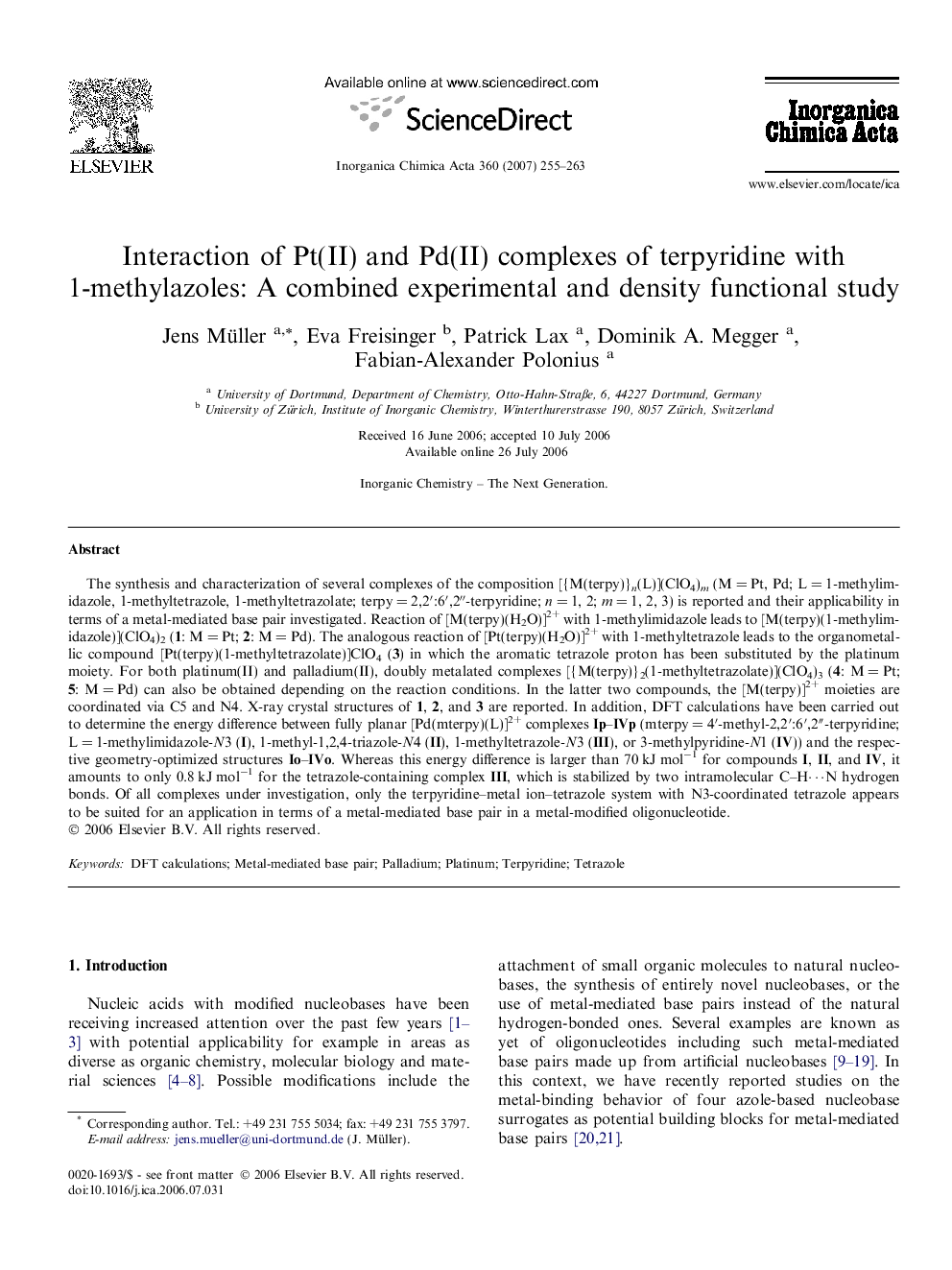| Article ID | Journal | Published Year | Pages | File Type |
|---|---|---|---|---|
| 1310847 | Inorganica Chimica Acta | 2007 | 9 Pages |
The synthesis and characterization of several complexes of the composition [{M(terpy)}n(L)](ClO4)m (M = Pt, Pd; L = 1-methylimidazole, 1-methyltetrazole, 1-methyltetrazolate; terpy = 2,2′:6′,2″-terpyridine; n = 1, 2; m = 1, 2, 3) is reported and their applicability in terms of a metal-mediated base pair investigated. Reaction of [M(terpy)(H2O)]2+ with 1-methylimidazole leads to [M(terpy)(1-methylimidazole)](ClO4)2 (1: M = Pt; 2: M = Pd). The analogous reaction of [Pt(terpy)(H2O)]2+ with 1-methyltetrazole leads to the organometallic compound [Pt(terpy)(1-methyltetrazolate)]ClO4 (3) in which the aromatic tetrazole proton has been substituted by the platinum moiety. For both platinum(II) and palladium(II), doubly metalated complexes [{M(terpy)}2(1-methyltetrazolate)](ClO4)3 (4: M = Pt; 5: M = Pd) can also be obtained depending on the reaction conditions. In the latter two compounds, the [M(terpy)]2+ moieties are coordinated via C5 and N4. X-ray crystal structures of 1, 2, and 3 are reported. In addition, DFT calculations have been carried out to determine the energy difference between fully planar [Pd(mterpy)(L)]2+ complexes Ip–IVp (mterpy = 4′-methyl-2,2′:6′,2″-terpyridine; L = 1-methylimidazole-N3 (I), 1-methyl-1,2,4-triazole-N4 (II), 1-methyltetrazole-N3 (III), or 3-methylpyridine-N1 (IV)) and the respective geometry-optimized structures Io–IVo. Whereas this energy difference is larger than 70 kJ mol−1 for compounds I, II, and IV, it amounts to only 0.8 kJ mol−1 for the tetrazole-containing complex III, which is stabilized by two intramolecular C–H⋯N hydrogen bonds. Of all complexes under investigation, only the terpyridine–metal ion–tetrazole system with N3-coordinated tetrazole appears to be suited for an application in terms of a metal-mediated base pair in a metal-modified oligonucleotide.
Graphical abstractA series of terpyridine complexes of platinum(II) and palladium(II) with 1-methylimidazole or 1-methyltetrazole have been prepared with a special focus on the applicability of such complexes in terms of an artificial metal-mediated base pair. Accompanying DFT calculations suggest that the terpyridine–metal ion–tetrazole system might be useful in this respect because of its extremely small planarization energy.Figure optionsDownload full-size imageDownload as PowerPoint slide
